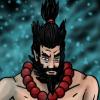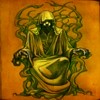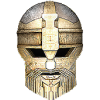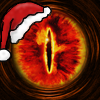
Research - Viking
#1

Posted 09 May 2009 - 01:53 AM
This topic is for research on the Vikings.
Sources should be included for all research.
Break dancing into the hearts of millions
#2

Posted 09 May 2009 - 08:06 PM
As vikings now will be part of the Community Project ![]() I'll do my best to fulfill these promises:
I'll do my best to fulfill these promises:
I once promised this, concerning norse mythology: If it is decided, that a viking-faction will be included in the mod, I can do this:
If it is decided, that a viking-faction will be included in the mod, I can do this:... and for the lore, that is even more comprehensive than the works of Tolkien, including 'History of Middle-Earth' (12 volumes) ...
... if this takes off, I'll post some links for online reading!... for the viking-faction only, but then including:...
Writers/Researchers (to write up the information on stuff and to research the Histories/Mythologies)
Ideas guys (we need creative thinkers to come up with interesting and achievable ideas)
...
on HISTORY:on SOCIETY and CULTURE:
- general history, geographical expansion, realms, enemies. (for those writing the storyline in relation to the other factions)
- important events and names. (for those creating the heroes)
on MYTHOLOGY:
- general info including building technology. (for those creating structures)
- viking weaponry and warfare. (for those creating heroes and units)
- resume and links to viking reenactment. (useful for concept artists, 2D art and modelers)
This is as much as I will have spare time to do during this summer ...
- resume of gods, their characteristics and powers, and links to online reading of authentic lore. (spellbook)
As the mod will be for BfME2
... Come fall and winter, I might eventually get time to do some of this:
- modeling of some (viking) structures.
- coding related to those structures.
- some map-related modeling and coding.
--------------------
note: this post will be edited and changed into an index for what further posts I might do in this topic. I like to work structured, and this will probably be my only contribution to the Community Project.
Have lost of fun, and good luck with the project!
Edited by Námo, 09 May 2009 - 08:17 PM.
... a star shines on the hour of our meeting ...



#3

Posted 09 May 2009 - 08:47 PM
http://img389.images...vwarrior2gs.jpg
http://students.uis......ng helmet.jpg
Do do this:
http://i44.photobuck...if?t=1241901737
http://www.theviking...ges/300386l.jpg
http://www.pvkii.com...s/berserker.jpg
And you should be okay.
#4

Posted 14 May 2009 - 12:37 AM
Here is the link Ulfsark
Here is some info from it about ulfsark
The etymology of the term berserk is disputed. It may mean "bare-sark," as in "bare of shirt" and refer to the berserker's habit of going unarmored into battle. Ynglingasaga records this tradition, saying of the warriors of Óðinn that "they went without coats of mail, and acted like mad dogs and wolves" (Snorri Sturluson. Heimskringla: History of the Kings of Norway. trans. Lee M. Hollander. Austin: Univ.of Texas Press. 1964. p.10). Others have contended that the term should be read "bear-sark," and describes the animal-skin garb of ther berserker. Grettirs Saga calls King Harald's berserkers "Wolf-Skins," and in King Harald's Saga they are called ulfhedinn or "wolf-coats," a term which appears in Vatnsdæla Saga and Hrafnsmál (Hilda R. Ellis-Davidson,"Shape-Changing in the Old Norse Sagas," in Animals in Folklore. eds. J.R. Porter and W.M.S. Russell. Totowa NJ: Rowman and Littlefield. 1978. pp. 132-133), as well as in Grettirs Saga (Denton Fox and Hermann Palsson, trans. Grettir's Saga." Toronto: Univ.of Toronto Press. 1961. p. 3).
The berserker is closely associated in many respects with the god Óðinn. Adam of Bremen in describing the Allfather says, "Wodan --- id est furor" or "Wodan --- that means fury." The name Óðinn derives from the Old Norse odur or óðr. This is related to the German wut, "rage, fury," and to the Gothic wods, "possessed" (Georges Dumezil. The Destiny of the Warrior. Chicago, Univ. of Chicago Press. 1969. p. 36). This certainly brings to mind the madness associated with the berserker, and other Óðinnic qualities are seen to be possessed by the berserk. Ynglingasaga recounts that Óðinn could shape-shift into the form of a bird, fish, or wild animal (Snorri Sturluson, p. 10).
The berserker, too, was often said to change into bestial form, or at least to assume the ferocious qualities of the wolf or bear. Kveldulfr in Egils Saga Skallagrímsonar was spoken of as a shapechanger (Hermann Palsson and Paul Edwards, trans. Egil's Saga. NY: Penguin. 1976. p. 21), and Hrolf's Saga tells of the hero Bjarki, who takes on the shape of a bear in battle:
Men saw that a great bear went before King Hrolf's men, keeping always near the king. He slew more men with his forepaws than any five of the king's champions. Blades and weapons glanced off him, and he brought down both men and horses in King Hjorvard's forces, and everything which came in his path he crushed to death with his teeth, so that panic and terror swept through King Hjorvard's army..." (Gwyn Jones. Eirik the Red and Other Icelandic Sagas. NY: Oxford Univ. Press. 1961. p. 313).
Dumezil refers to this phenomenon as the hamingja ("spirit" or "soul") or fylgja ("spirit form") of the berserker, which may appear in animal form in dreams or in visions, as well as in reality (Georges Dumezil. Gods of the Ancient Northmen. Los Angeles: Univ.of California Press. 1973. p. 142).
The berserk was sometimes inherently possessed of this immunity, or performed spells to induce it, or even had special powers to blunt weapons by his gaze. Many tales say of their berserkers, "no weapon could bite them" or "iron could not bite into him." This immunity to weapons may also have been connected with the animal-skin garments worn by the berserk. As we saw above, while in animal form, "blades and weapons glanced off" Bodvar Bjarki. Similarly, Vatnsdæla Saga says that "those berserks who were called ulfhednar had wolf shirts for mail-coats" (Ellis-Davidson, "Shape Changing," p. 133). This concept of immunity may have evolved from the berserker's rage, during which the berserk might receive wounds, but due to his state of frenzy take no note of them until the madness passed from him. A warrior who continued fighting while bearing mortal wounds would surely have been a terrifying opponent.
It is likely that the berserk was actually a member of the cult of Óðinn. The practices of such a cult would have been a secret of the group's initiates, although the Byzantine emperor Constantine VII refers in his Book of Ceremonies to a "Gothic Dance" performed by members of his Varangian guard, who took part wearing animal skins and masks: this may have been connected with berserker rites (Hilda R. Ellis-Davidson. Pagan Scandinavia. NY: Frederick A. Praeger. 1967. p. 100).
Edited by empireruler, 14 May 2009 - 12:38 AM.

#5

Posted 17 May 2009 - 08:40 PM
VIKING REENACTMENT SITES
VIKING REENACTMENT GROUPS:

The Jomsvikings (international)
Photo-Gallery here! - photos of Jomsviking Heroes here - some articles incl.rulebooks here, and if you you want to get an idea of the reenactment scene worldwide, go here to see in which battles the Jomsvikings have participated!The Jomsvikings are the world's leading Viking re-enactment organisation. Our warriors train intensively in the established Jomsviking Fighting System using authentic Viking age steel weapons. We are the internationally respected fighting force; the most spectacular, dynamic and striking Vikings alive today!

ASK Viking combat group (Denmark)
Tribute to ASK (video) here ('cause that's the tribe I belong to!)- Index to Photo-Gallery here! (lots of photos!) - Index to articles on equipment here (those on armour very detailed - good stuff)ASK is the oldest Viking battle re-enactment group in Scandinavia. ASK is based around Århus, Jutland.

ULFHEDNIR is a group with an interest in the archeology and history of the Viking Age. In short, we try to make Living History.
Jomsborg Vikings Hird (Poland)
Only a few photos in the Gallery (here) but other photos in the different submenus here, inc. photos of ship and houses (fortress)the Jomsborg Vikings Hird – brotherhood of warriors from Jomsborg. We attempt to recreate the tradition of the Jomsvikings, who formerly were in the pay of the Polish King Boleslaw, known in the saga’s as Burisleif.
Index to Photo-Gallery here! (lots of photos via links to Webshots, Flickr etc.) - many articles (mostly on history and daily life, various crafts etc.) here!
Regia Anglorum was a term used by early English writers to describe the English state. It means 'The Kingdoms of the English'. Regia Anglorum attempts to recreate a cross section of English life around the turn of the first millennium.
A few photos here! - many articles here and here.
Founded in 1971, The Vikings are the oldest and largest Dark Age re-enactment society in the UK, and probably the world.
Photo-Gallery here! - many articles on various topics, index here.
The Vikings - Canada is an organization focused on developing and presenting the reconstructed lifestyle of the Vikings. ... the Society concentrates mainly on the 10th Century ...
The Vikings NA (North America)
No Photo-Gallery, but really a lot of articles (of varying quality) here! - links to other VNA groups here.The Vikings NA (North America) is made up of a small handful of devoted individuals who hope to someday rival the numbers across the pond.
Photo-Gallery here!
The Jomsvikings, fierce warriors of Northern Europe, descended upon a small village in Central Texas. The Vikings had come and Waco was never to be the same again!
The Huscarls Dark Age Re-enactment Society (Australia)
No Photo-Gallery, only a few photos, and not much information.Our main purpose is to try to accurately re-enact the life and times of the British Isles and Western Scandinavia during the period known as the Viking Age
Photo-Gallery here! - text only in Icelandic language.
Rimmugýgur er elsta víkingafélag á Íslandi.
Photo-Gallery here! - text only in Swedish language.
Fordom kallades befolkningen i Göta älv-dalen ”Älvegrimar”, vilket lär betyda: ”De bistra vid älven”.
Photo-Gallery here! - text only in Swedish language.
Halsingarna betyder, de som bodde vid Öresunds smalaste del – halsen eller "helsen" som det hette på vikingatiden.
Index to Photo-Gallery here and here - text only in German language.
Reenactment ist der Versuch, eine vergangene Epoche für kurze Zeit historisch so korrekt wie möglich und lebendig darzustellen. Auf der Seite wird Reenactment der ersten Jahrtausendwende in Europa dargestellt
Ribe Vikinge Langbue Laug (Denmark)
Photo-Gallery here - text only in Danish language. (site for Viking reenactment specialized in longbows!)... fremstille og skyde med vikingebuer og pile ... udføre eksperimentelle arkæologiske forsøg ...
VIKING REENACTMENT ARMOURY, WEAPONRY & JEWELRY:

... produce a wide range of weaponry from [...] the Dark Age, Medieval and Tudor periods ...
The Jelling Dragon ... Viking crafts, battle ready weapons, costume accessories, living history supplies, banquet supplies and museum replicas from Viking and early Medieval times.
... numerous items of arms and armour ... as well as many other objects of an historical nature ...
Viking Shield bring you great replicas of the Viking Age ... please remember that haggling was quite common during the Viking Age.
... a vast collection of Traditional and Historical designs, taken from Artifacts & Antiquities from a variety of Cultures including the Vikings, Anglo-Saxons, Picts, Celts, Rus, Saami, Finns, Scythian and Magyar.
Our artifacts are available in the National Museums throughout Denmark and, owing to their authenticity, have been selected by the Smithsonian's Natural History Museum and major U.S. museums for their Viking exhibits.
... Dark Age Silverwork ... Viking & Saxon ...
Edited by Námo, 18 May 2009 - 07:51 AM.
... a star shines on the hour of our meeting ...



#6

Posted 17 May 2009 - 08:52 PM

Careful. This link is DANGEROUS. Do NOT click it. This one, however, is fine.
I had the meaning of life in my signature, but it exceeded the character limit.
#7

Posted 18 May 2009 - 07:28 PM

I really don't do requests and my Arnor Soldier is not fit for BFME. Don't ask me for either.
#9

Posted 31 May 2009 - 10:33 PM
short note on viking sacrifice:
referring to the debate in topic: Vikings - Tech tree: the vikings DID use sacrifices to the Gods. Sacrifices are called Blót in old Norse.
- The offering of animals were very common, usually coats or cattle, but also horses were offered. (many sources)
- Human sacrifices were not very common, and the sources on these may not be without prejudice, being tinted by Christianity (gradually introduced in the Scandinavian countries from about 1000 AD) - Recent uncompleted archaeological research from different sites in Denmark seems to indicate that human sacrifices may have been more common than hitherto believed. (sources only in danish language)
The Hurstwic website are mainly referring to the Vikings of Iceland, but has many excellent articles.Feasts and sacrifices were an important part of Norse religious rites. While feasts and sacrifices might be made on special occasions, there also were regular feasts in which all the community took part. One occurred at the beginning of winter, when sacrifices were made for plenty during the approaching winter season. Another occurred at mid-winter for the growth of crops that would be planted in the spring. And a third took place in the spring, for victory and success on raids and other expeditions to come in the summer.
These festivals were a time for extended feasting by the whole community. Sacrificial animals were killed and eaten, and ale was drunk in honor of the gods, and in honor of departed kinsmen and ancestors. An essential element seems to have been that the entire community eat and drink together, although other community activities, such as games and contests, were likely to have been a part of the festivities.
Chapter 107 of Óláfs saga helga briefly describes the feasting ritual. In the beginning of the 11th century, King Óláf of Norway learned that the farmers in the Trondheim district held great feasts at the beginning of the winter. Toasts were made to the Æsir. Cattle and horses were slaughtered, and their blood used to redden the idols. These sacrifices were performed to improve the harvests.
Another episode in chapter 91 of the saga highlights the importance of these rituals. Sigvatr, one of the poets of King Óláf of Norway, was sent on a diplomatic mission to Sweden. At that time, most of Norway had converted to Christianity, but most of Sweden remained pagan. One night during his journey, Sigvatr and his traveling companions sought shelter at a farm house, but as Christians, they were turned away because a sacrifice to the elves (álfablót) was being made. The woman at the door said, "I dread Óðin's wrath, we are pagan here." This withholding of hospitality to travelers was unthinkable in the Norse world, so this act underlines the importance of the ceremony taking place within the house.
This sort of sacrifice was called a blót. The offering was meant to strengthen the gods, who would thus look more favorably on the people making the offering. Animals were sacrificed, and as part of the ritual, the participants ate the meat and drank the ale, both of which were blessed by the chieftain. The participants drank to the gods: to the Æsir for victory, and to the Vanir for fertility and peace. One of the more complete descriptions occurs in in chapter 14 of Hákonar saga góða. All kinds of animals, including horses, were slaughtered. Their blood was sprinkled on the walls of the temple, as well as on the participants in the feast. The meat was boiled in cauldrons in the temple and eaten at the feast. Drinks were passed over the fire, "signed" by the chieftain giving the feast, and toasts were made to Óðin, Njörður, and Freyr.
note on sacred places for worship/sacrifice:
These were primarily 'open' (outdoor) places, and usually in some kind of enclosure, and under the protection of the local chieftain (like a Thegn) - the name in old norse being Vé - often the Vé contained some sort of altar called hörgr (plural hörgar). The altar may sometimes have been in some sort of building called a Hov.
The Danish Language version of Wikipedia offers a lot more information than the English one. Entries: Vi, Hørg and Hov.
More info in a later post on Viking Structures.
Edited by Námo, 31 May 2009 - 11:16 PM.
... a star shines on the hour of our meeting ...



1 user(s) are reading this topic
0 members, 1 guests, 0 anonymous users




















